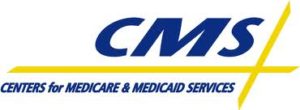Wolf Presents Health Care Reform Proposal
Governor Wolf has unveiled a health care reform plan with the goal of making health care more affordable, supporting sustainable growth and transformations of health systems and corporations, and addressing health inequities across Pennsylvania. The plan includes three major components:
 An Interagency Health Reform Council charged with developing recommendations on how to identify and capitalize on efficiencies in the existing health care system.
An Interagency Health Reform Council charged with developing recommendations on how to identify and capitalize on efficiencies in the existing health care system.- Regional Accountable Health Councils convened by Medicaid managed care organizations to assess community needs and develop regional transformation plans.
- A Health Value Commission charged with setting spending targets for payers in the areas of primary care, behavioral health, and value-based purchasing. The commission also would perform public interest reviews of proposed large provider mergers, acquisitions, and changes in ownership.
Although it requires legislation to move forward, the third component of the governor’s plan appears to have the most potential to affect Pennsylvania safety-net hospitals
Learn more from the Wolf administration’s news release announcing the plan.
 In late December, PBS broadcast an interview with Centers for Medicare & Medicaid Services administrator Seema Verma. Kaiser Health News has published a transcript of excerpts from that interview during which Verma discusses Medicaid – including enrollment, eligibility, services, and children – Medicare for all, administration attempts to reduce health care costs, protection for people with pre-existing conditions, and more. Read those excerpts in the Kaiser Health News article “
In late December, PBS broadcast an interview with Centers for Medicare & Medicaid Services administrator Seema Verma. Kaiser Health News has published a transcript of excerpts from that interview during which Verma discusses Medicaid – including enrollment, eligibility, services, and children – Medicare for all, administration attempts to reduce health care costs, protection for people with pre-existing conditions, and more. Read those excerpts in the Kaiser Health News article “






